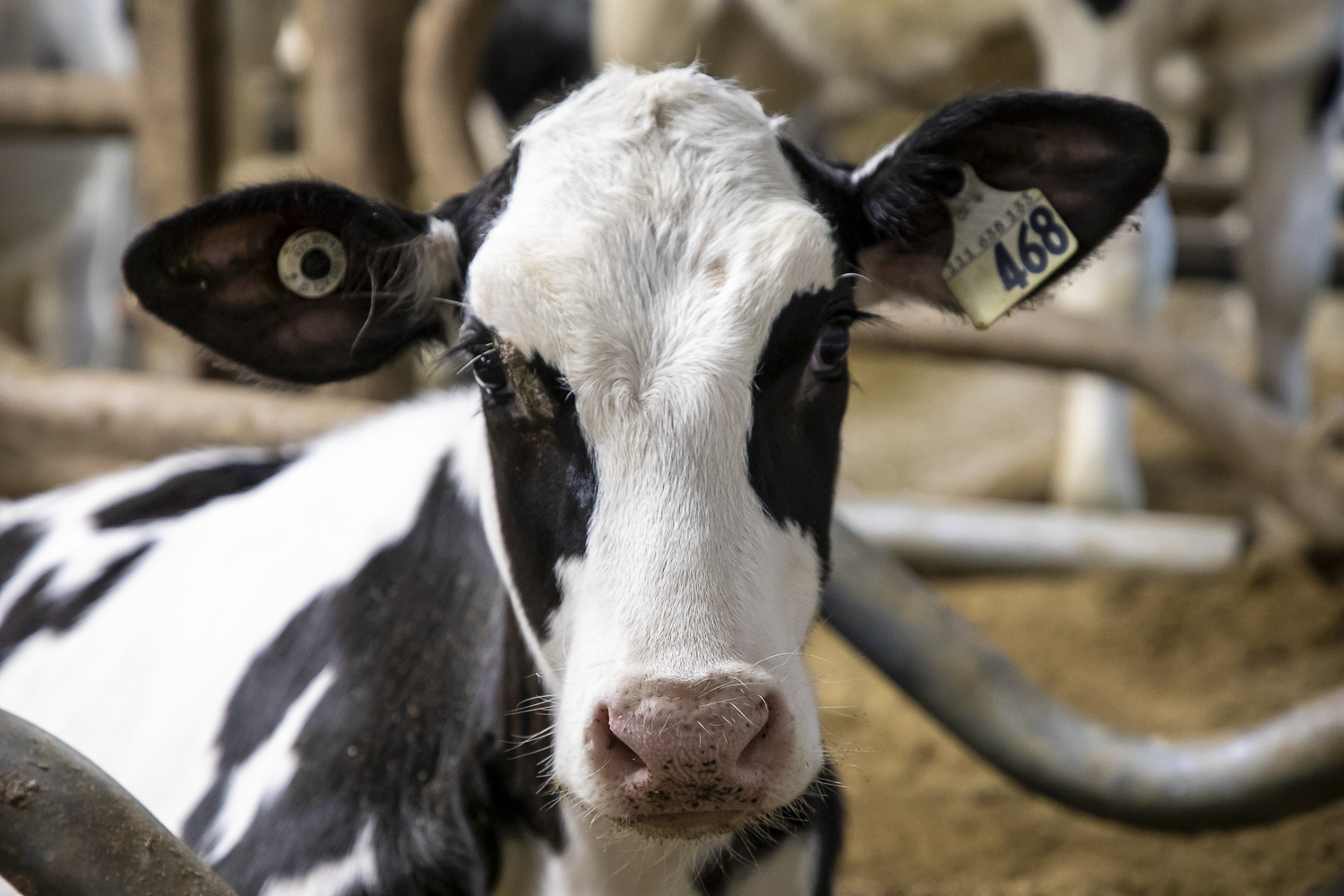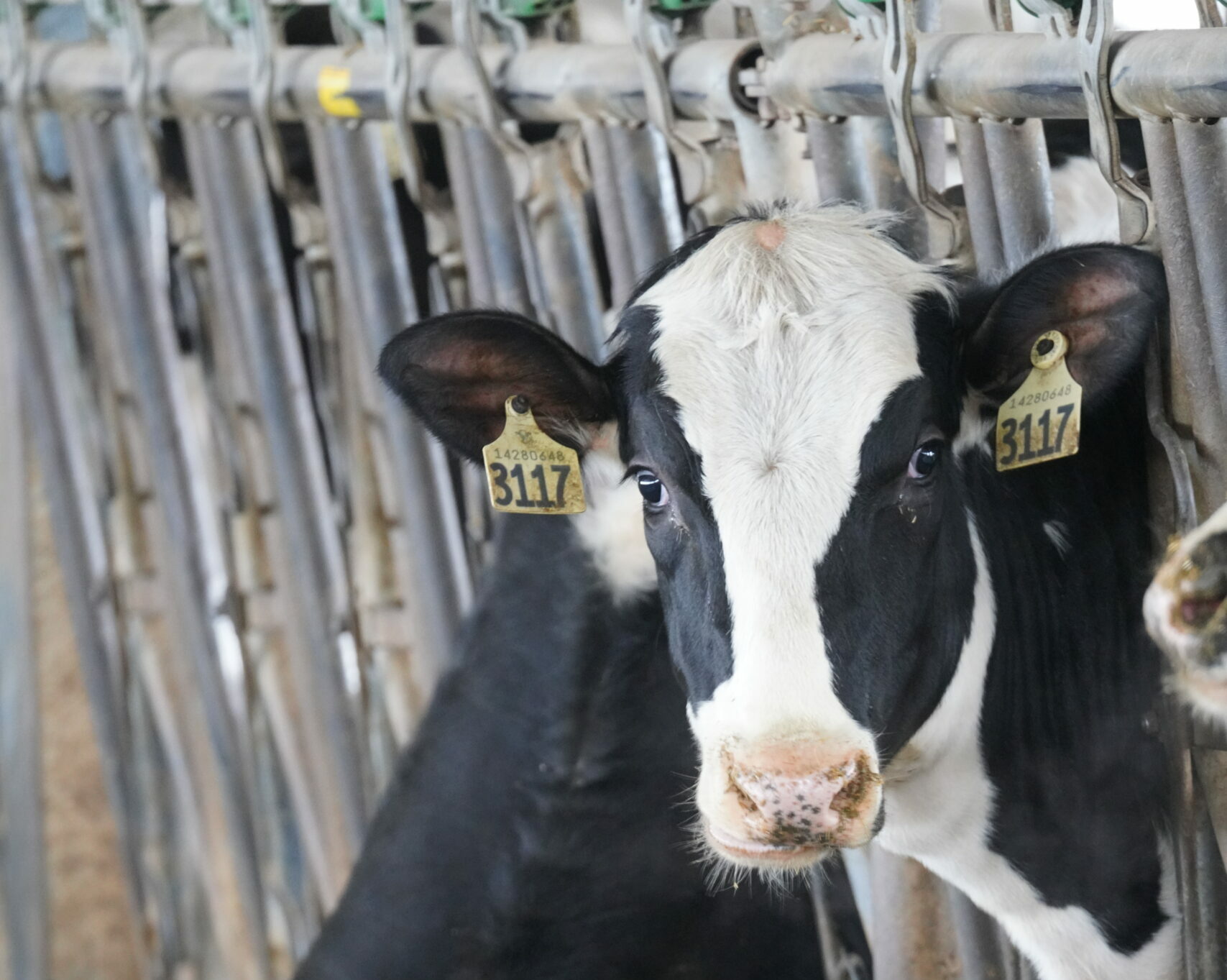Genetic Tools Tips & Tricks: The Inbreeding Calculator
- June 5, 2024
Many dairy producers are technologically savvy and seek out tools to help them better manage their herd. On the genetic front, the Lactanet website is one such tool, highly utilized by those keen on monitoring and querying genetic data. The Inbreeding Calculator, which has provided for many years now the inbreeding levels and Parent Averages (PA) for potential progeny from various matings, is one of the website’s most frequently used features. Recently, the Lactanet Inbreeding Calculator tool was enhanced to also help manage undesirable genetic conditions and haplotypes. When looking to breed any given female, the Inbreeding Calculator can be accessed one of three ways:
- From the “Genetics” drop down found in the top menu of the Lactanet website.
- From the “Inbreeding Calculator” link found above an Active List of females. An Active List of females can be generated by performing a Group Query, or you can target females with the same prefix, as covered in the example below.
- By clicking on the “Inbreeding” tab displayed at the top of any page for the female of interest, which then pre-populates the Inbreeding Calculator with the female’s registration number.
Using the Inbreeding Calculator for Females with Your Prefix
In a previous Tips & Tricks article, readers learned how to enter their prefix in the Individual Animal Query to bring up a list of animals they have bred. Using the Query Refinement filter, results can be further reduced to only include active females by clicking the “Active Only” option. Using the prefix “Character” – the highest Pro$ herd in April 2024 as an example – here are the steps to use the Inbreeding Calculator with a list of females with a common prefix and a male of interest:
- Select the Individual Animal Query.
- In the “Search by Name” box, select “Holstein” and “Female” and type “Character” into the empty field. Submit the query and you will be brought to the resulting list of females.
- To refine the list to only include Active females, select “Query Refinement” and click the “Active Only” button. At this point you can also refine the female list by entering evaluation thresholds, as well as sort the list by a trait other than LPI by using the “Sort results by” dropdown at the bottom, if desired. Once you submit the Query Refinement settings, you will be brought back to an updated Active List of females as seen below.
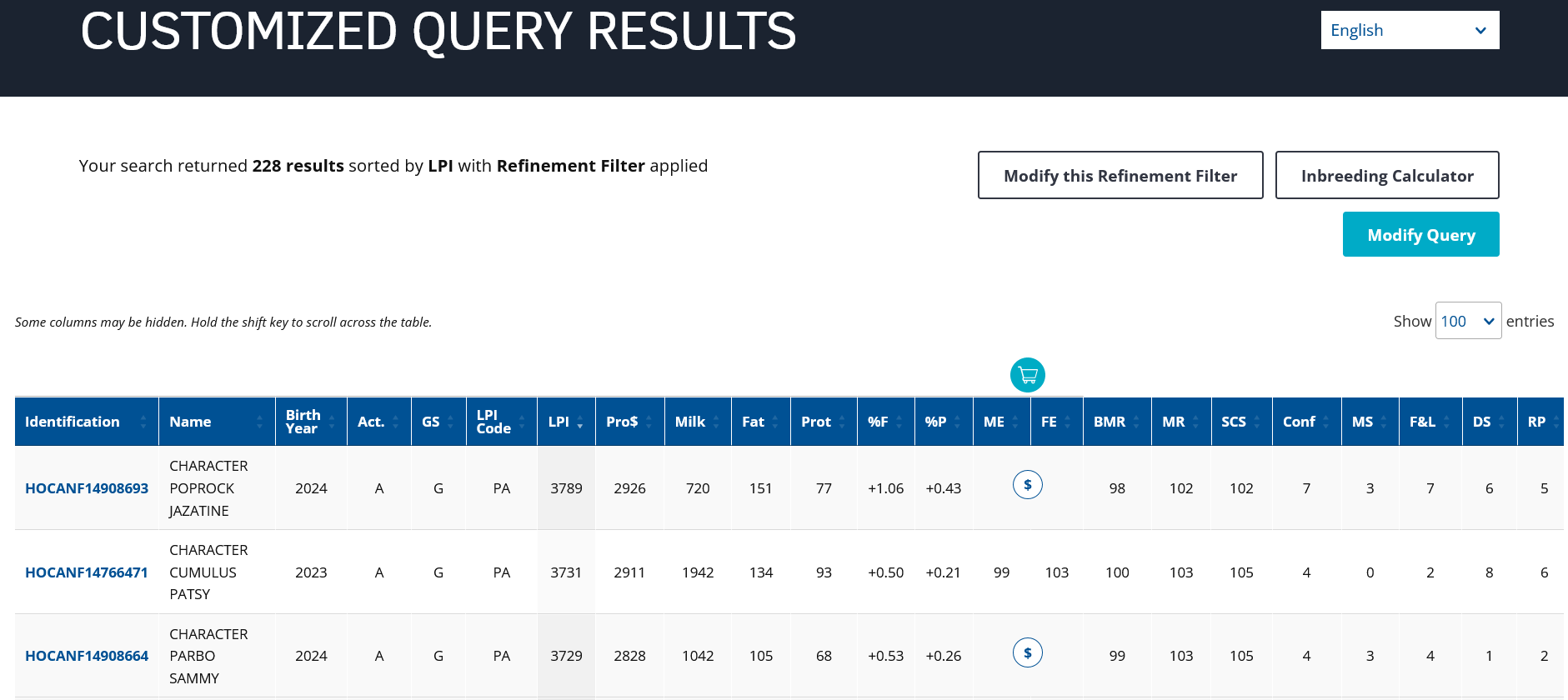
4. From here, choose the “Inbreeding Calculator” button at the top. By default, “Use the active list” will be selected in the “Select Female(s)” section, as seen below. Under “Select Male(s)”, choose “Individual” and fill in the registration number for a sire of interest. Remember to change the country if the bull in question has a country code other than Canada as part of their registration number. In this case, the #10 proven sire for Pro$, Progenesis Pragmatic, was used. Hit “Continue” to see the Inbreeding Calculator Report.
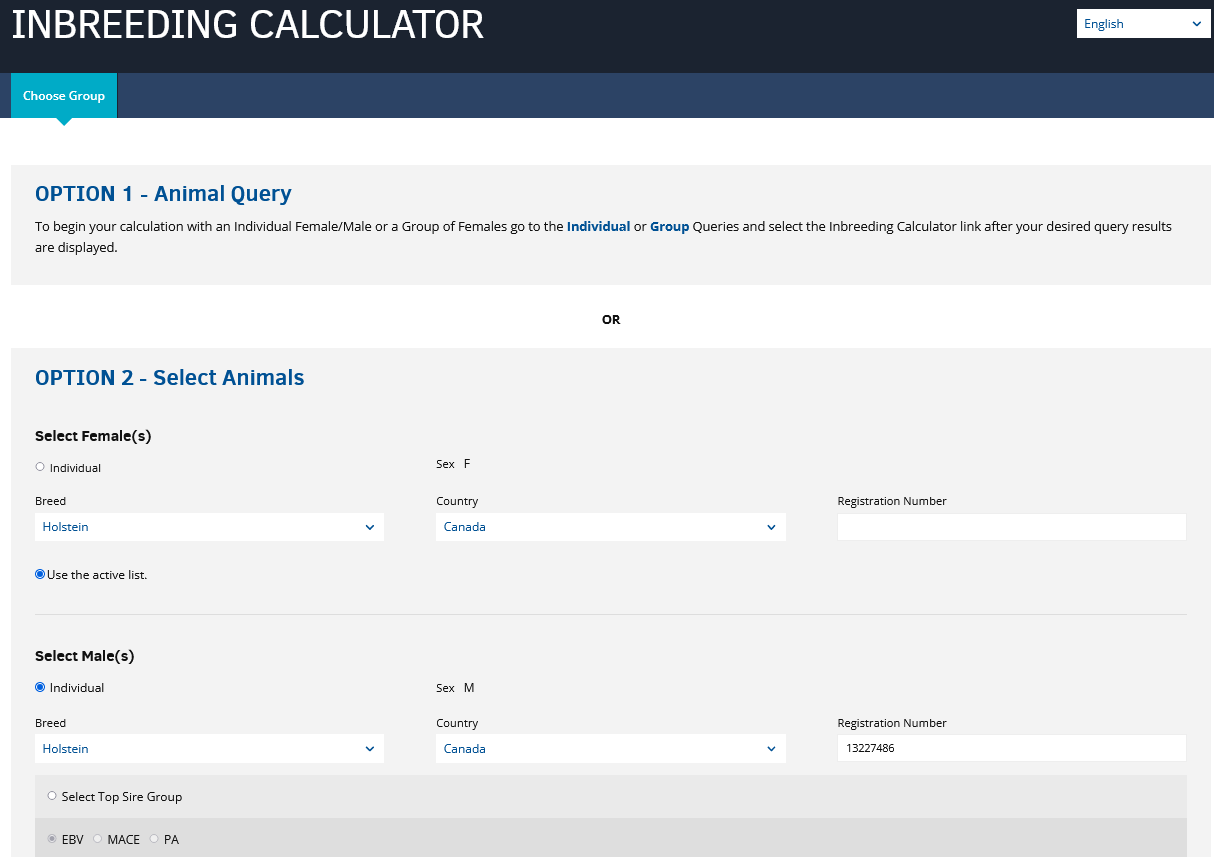
The top of the report shows the sire information and his genetic evaluations for selected traits. Below is a list of all the potential female mates ranked in descending order of LPI. Accompanying these potential mates are the inbreeding levels and parent averages for potential progeny for a given female mated to the selected sire, Pragmatic. Select “Download results to Excel” to find and sort traits by parent averages for additional traits beyond those listed in the Inbreeding Calculator Report.
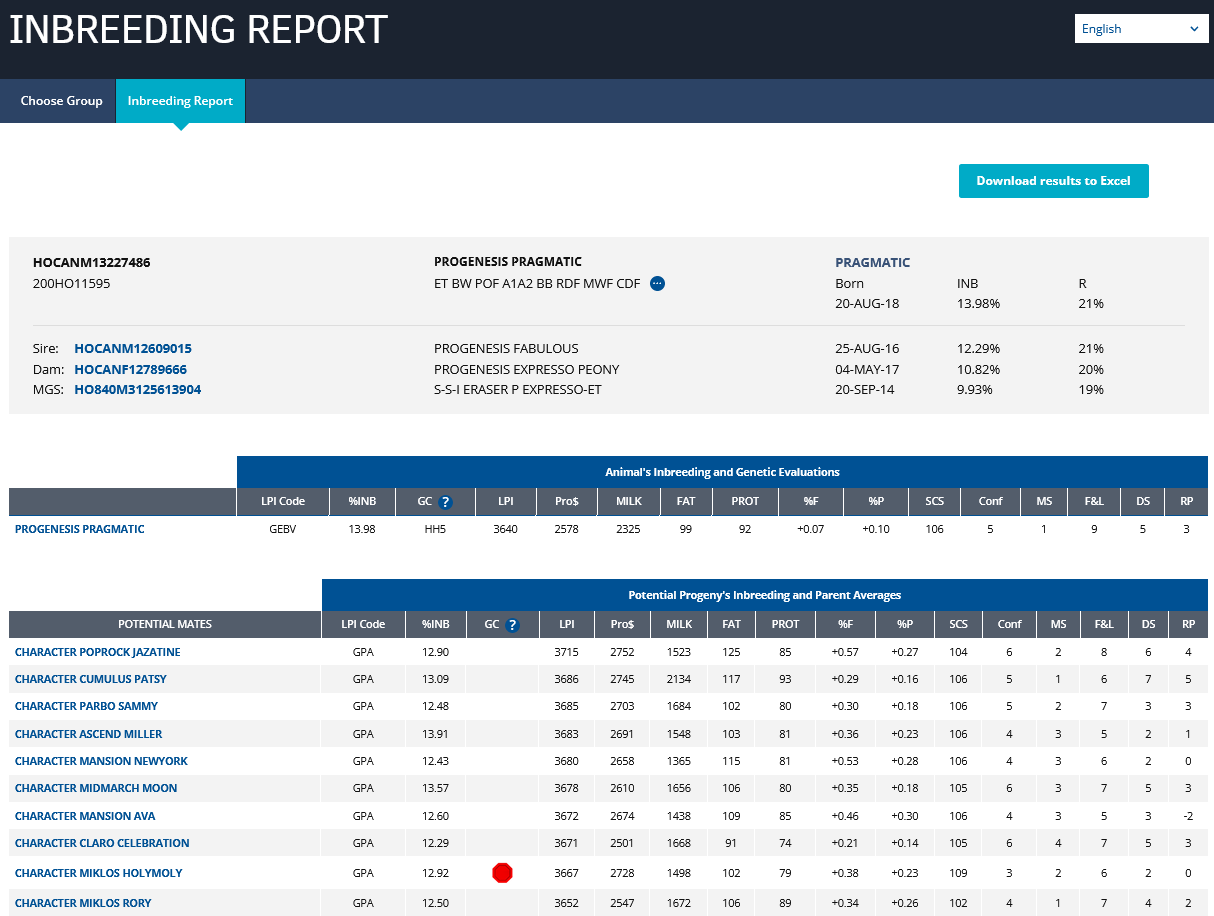
This report can be used to help select a mate for the animal of interest. The inbreeding percentage (%INB) should be used to eliminate potential mates that lead to a %INB that you deem to be too high. While comfort levels for %INB may vary, you should note that the average inbreeding level today is approximately 9% so matings lower than this threshold will be more difficult to consistently achieve. The recently added GC column should also be used to eliminate potential matings that have a risk of producing a pregnancy or calf affected by an undesired gene. For the selected animal of interest, the GC column contains a list of the genetic conditions for which they have a Carrier Probability of 25% or higher. In the example above, Pragmatic has a Carrier Probability higher than 25% for Holstein Haplotype 5 (HH5).
For the list of potential mates, a mating risk calculation is done to reflect the probability that the resulting pregnancy or calf will be affected by the undesirable genetic condition or haplotype. If the mating animal has a Carrier Probability higher than 25% for more than one undesirable gene than the mating risk calculation would be the probability that the resulting pregnancy or calf will be affected by at least one of the undesirable conditions or haplotypes. The “GC” column beside the list of potential mates in the lower section reflects the mating risk by either remaining blank or showing a warning sign or stop sign:
- Blank Column: The mating risk is below 1%. This is the case for the first eight cows in the example.
- ⚠ Producers should proceed with caution with the mating, as the probability of producing an affected pregnancy or calf is estimated to be at least 1% but less than 6.25%.
- ⯃ It is not recommended to proceed with the mating as the probability of producing an affected pregnancy or calf is 6.25% or higher. This is the case for Character Miklos Holymoly in the example above.
For more information on this new feature, check out our article entitled “New Lactanet Tools to Manage Undesirable Genes”.
After eliminating potential mates based on %INB and the symbols in the GC column, the Parent Averages for the resulting progeny from each potential mate should be considered. Ultimately, the combination of the highest Parent Averages with an acceptable level of inbreeding and a low probability of producing a pregnancy or calf affected by an undesirable gene should lead to the selection of the most desirable mate.
The example illustrated in the screenshot above allows to determine which female would be the best mate for the bull Pragmatic. The tool can also be used to easily look at results for various potential sires by clicking the button “Select Top Sire Group”, as an alternative under “Select Male(s)” mentioned in point 4 above, and then selecting from among the bull names listed. A third possible way to use the Inbreeding Calculator tool is to enter the registration numbers for a given female and male and examine the values on an individual mating basis.
In the previous two Tips & Tricks articles, the Animal Query, the Group Query and the Selection Refinement Filter were covered. These tools, in combination with the Inbreeding Calculator described in this article, put genetic information at your fingertips to help facilitate the breeding decision process.





